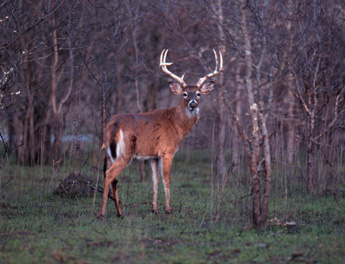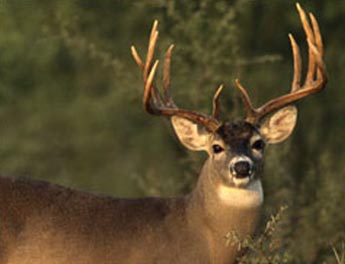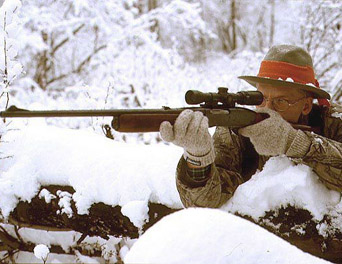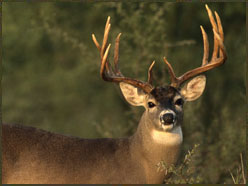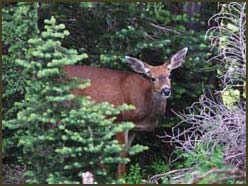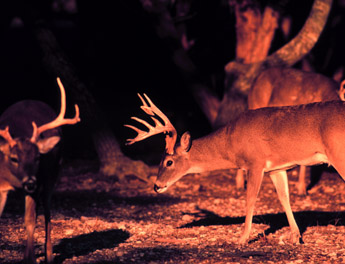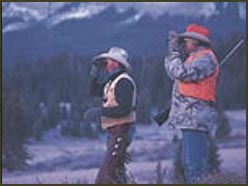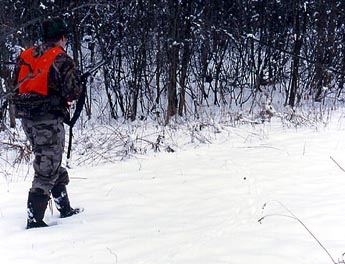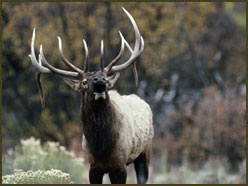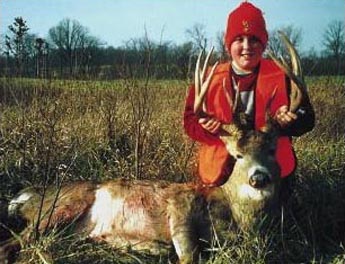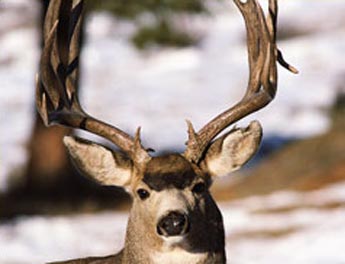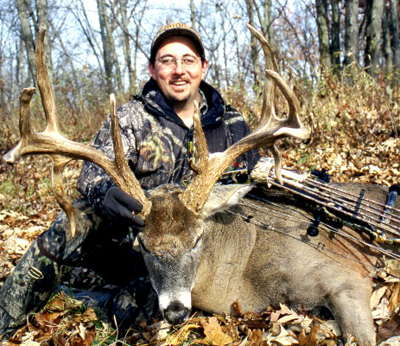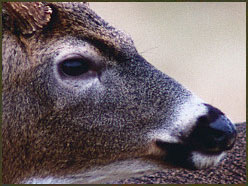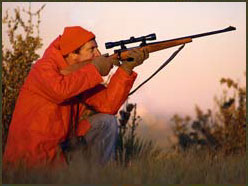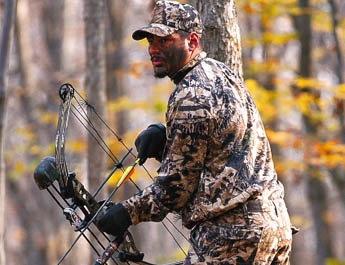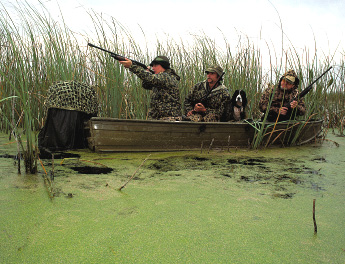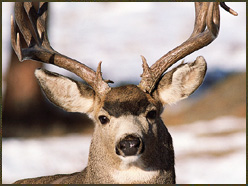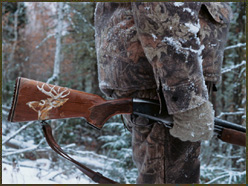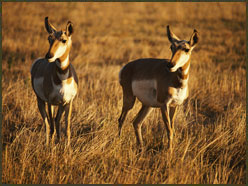Deer hunting the big woods is vastly different from pursuing whitetails near agricultural lands. Where I live in southern Michigan, farmlands predominate and deer follow predictable movement patterns to and from bedding and feeding areas. However, trying to keep track of the deer where I hunt in the vast forests of the Upper Peninsula is like trying to predict an election.
Last year I managed to tag a nice 10-pointer when I hunted with Mike Noskoviak, who owns and operates Superior Guides and Outfitters (888-324-3238). Noskoviak offers trophy whitetail and bear hunts on more than 700 square miles of remote timberlands in northwestern Wisconsin, a region famous for producing some of the biggest bucks on the continent. In fact, his clients normally take at least a couple of Boone and Crockett-class bucks every year and have an excellent success rate overall. Bowhunting with Noskoviak made me rethink my big-woods hunting tactics.
Teaching New Tricks
“We have our best success taking mature bucks during the rut, which runs from late October to the end of Wisconsin’s firearms deer season in late November,” says Noskoviak. “During that period, we set up primarily in funnels. Because back-country deer tend to range a lot, we focus our hunting efforts in areas with fresh sign. This involves plenty of in-season scouting.”
Noskoviak and his guides scout primarily on foot and tread lightly in hope that deer won’t detect their presence. Mature, big-woods bucks are spooky, so the guides like to find a good spot and hunt it quickly, using what Noskoviak describes as a “three-day strategy.” Hunters will sit in the stand for three consecutive days until the buck that made the sign is tagged or time runs out and hunting focus is switched elsewhere.
“We try to set up our stands to take advantage of a major chink in the whitetails’ armor,” says Noskoviak. “In our area, during the rut, bucks will travel quartering with the wind about ninety percent of the time, as they actively seek out estrous does. Knowing this, we take advantage of natural funnels and position our hunters so bucks will approach them from either upwind or crosswind.”
Whitetails often travel with the wind so they can smell predators sneaking up behind them. Greg Covington, another hunter in our camp, hunted a funnel that featured a huge beaver pond behind the stand. He sat in the ladder stand for three days. The first day he didn’t see a deer. The next day the wind shifted and he saw several dandy bucks. The wind shifted again on the third day and at noon an eight-pointer with a spread of nearly 20 inches fell to one of his arrows. Within minutes, a 190-class 12-pointer with an estimated 24-inch spread and symmetrical points over a foot long came along. Covington said each buck he saw traveled quartering with the wind, an observation shared by every hunter in camp.
[pagebreak] Check for Deer Density
The hunting areas Noskoviak seeks typically contain rather low deer densities, with 15 to 20 deer-per-square-mile being ideal. He also looks for areas with good buck-to-doe ratios. “Areas with higher deer levels tend to draw much more hunting pressure,” says Noskoviak. “There’s usually a lower buck-to-doe ratio, and smaller bucks. We also try to get away from easily accessed areas.”
Many states with big-woods habitat have archery and gun seasons that overlap the rut. Bucks that live in low deer-density areas with good buck- to-doe ratios will often travel great distances in search of hot does. A Michigan DNR study showed that some U.P. bucks traveled great distances (one went 51 miles), so setting up on a good travel corridor can provide opportunities on bucks with core areas many miles away. When the wind shifts, bucks will travel in a different direction, quartering with the wind, which can produce sightings of entirely different bucks from other areas.
“”We hunt all day, with our best success coming during the midday hours of nine a.m. to three p.m.,” says Noskoviak. “We’ve had some good success rattling and calling then. One hunter last year rattled in fifteen different bucks during a six-day hunt, and several of those bucks were giants.”
Locating Honey Holes
The big woods can seem daunting. Diligent scouting will help narrow down the focus to a few select, high-percentage spots. I use topographical maps and plat books along with aerial photos in my scouting activities. Key corridors are typically along streams, on ridges rising up within swamps and the edges of large wetland areas. Logging operations also create funnels that channel deer in certain directions. Contact state biologists and pick their brains about specific areas that would support greater deer densities. Once potential hunting spots are identified and mapped, the footwork begins. Some scouting can be done during the spring; however, I do most of my scouting during archery season. If an area shows any signs of hunting pressure, I look elsewhere. For that reason, my spots are almost always well off the beaten path.
Sometimes the best places are so far from the nearest road that the only way to hunt them is to bivouac in with a backpack, boat or canoe. The effort might be worth it. Areas that seldom see human intrusion are often home to awesome bucks. They live so deep in the big woods that they don’t expect trouble to show up on two legs.
[pagebreak] Deer Down. Now What?
One of the biggest problems deer hunters in big woods face is success: How do you get a mature, heavy buck out of a remote area?
If you’re lucky, you live in a state where an ATV can be used to haul a buck out of a wildlife management area or publicly owned forest. I’ve used a Shappell Jet Sled (shown below) hitched to the back of an ATV for many deer recoveries. This plastic, tobogganlike hauler is designed primarily for transporting icefishing gear, but I’ve found that pulling a deer inside a Jet Sled is much easier than dragging it over the bare ground, and it protects the carcass from damage.
Last year I used a game hauler to extract several bucks and it worked like a charm. My hunting buddy and I easily hauled out his 205-pound buck over a half mile of wet and hilly terrain. Later, I took out two deer by myself using Cabela’s Super Mag Hauler. Game carts work wonders in all but brushy, thick terrain, which is where the Jet Sled shines. I keep both in the back of my truck when hunting the big woods. I have to walk back to the truck to retrieve one, but it still beats trying to get a fat buck out of the woods without one.
Check out the different models of game haulers offered by Bass Pro Shops (800-227-7776, www.basspro.com); Cabela’s (800-237-4444, www.cabelas.com); and Trophy Outfitters (928-333-5290, www.trophyoutfittersonline.com).
